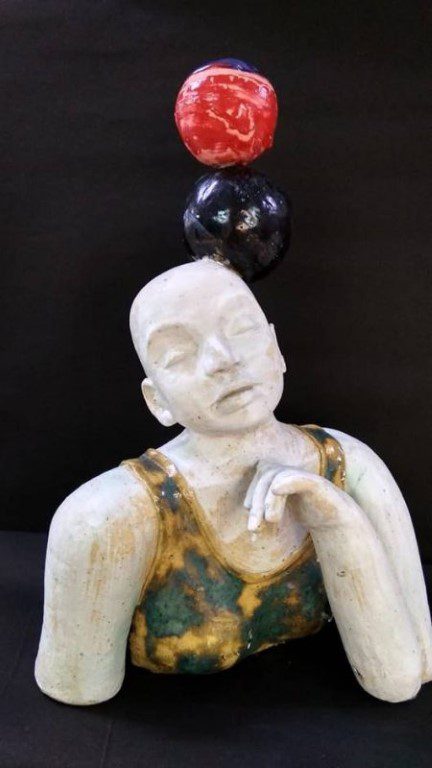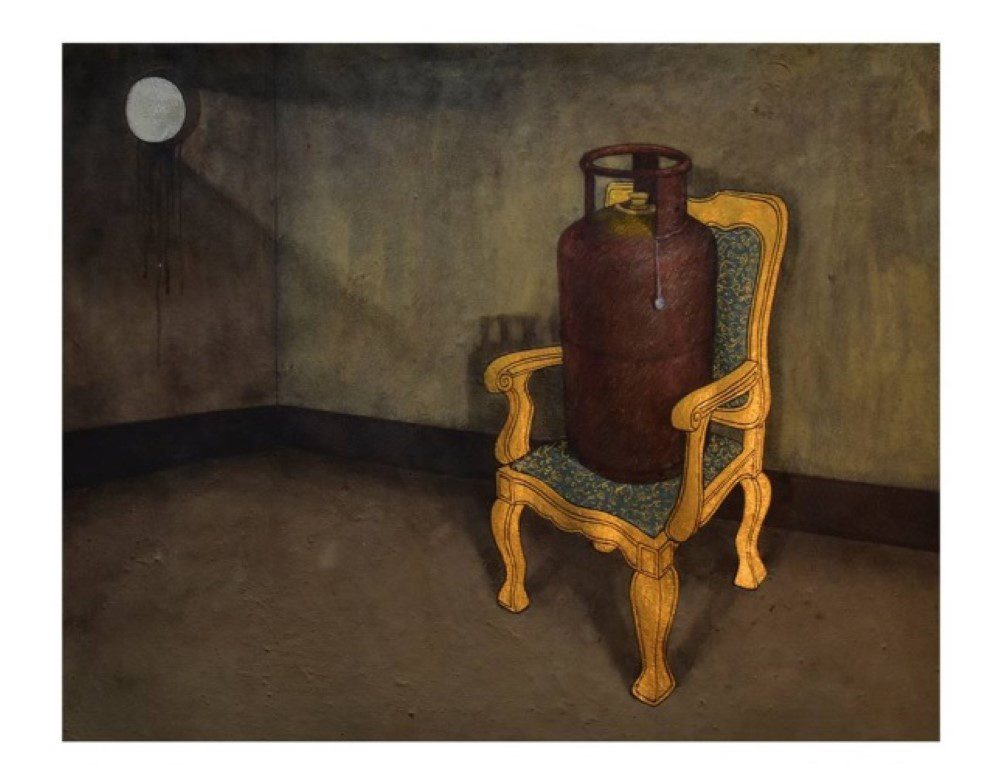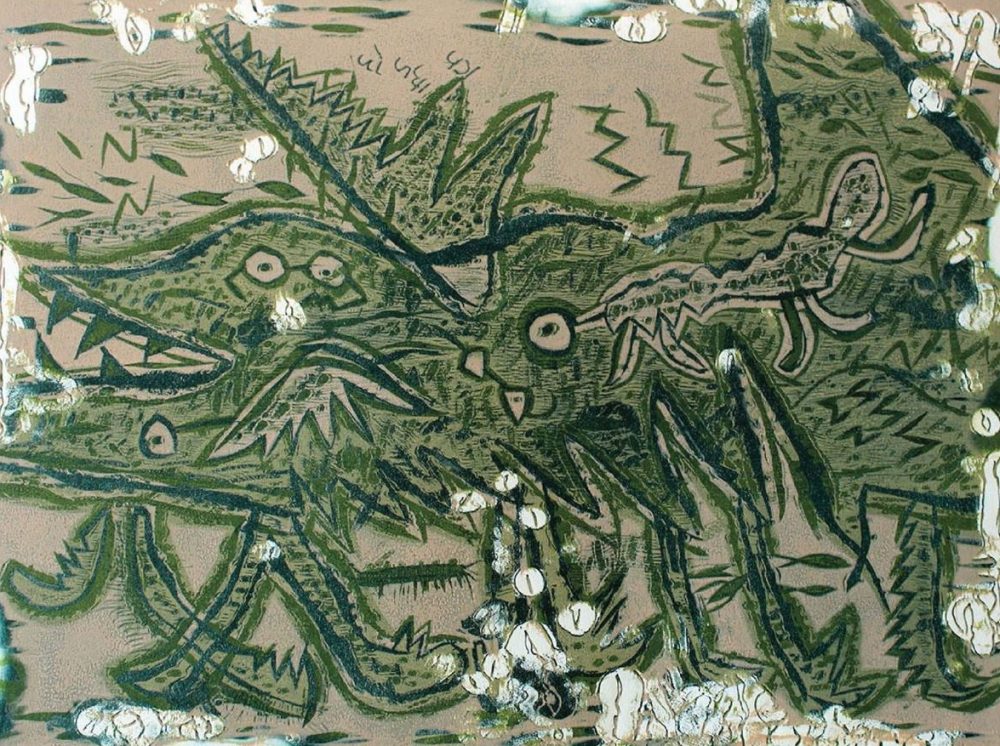Delving deep into the ephemeral mist of existence, the painting by Anandu Sarma as shown in this vivid representation of a village landscape ravishes an artist in their process and implies. This movement towards retraction seems to be an obligatory precursor to migration and affects the way in which Sarma composes; his recurrent ebb and flow from human contact with landscapes generates a dialect of closeness felt complete with alienation. It is with this simultaneous sense of familiarity and distance that he constructs his visual narrative, which sees symbolism abound throughout the work.
Sarma’s method of endowing discrete entities with their own ‘struggle for existence’ is evident in this work. Such scenes of the luxuriant vegetation, a well-ordered terrain, the structural configuration of houses and the everyday life of people crossing a small bridge or chatting at their entrance are meaningful. Everything, the trees, the buildings, the figures just vie to capture our attention; each thing seems so conscious of its individuality. This is where you can see the philosophy of the artist for denying other objects and surroundings because each element in composition individually but rather they contrast with forms close-by rather than being fused together into mannered holism. The winding roads; the solitary figures of people; the rigid fields, collectively make for an exploration of solitude in a collective place.
The conflicting development of nature and fabricated can be observed through what Sarma describes as “parallel, symbiotic, and dichotomous lines. The fields are deliberately geometric and symmetrical — an obvious symbol of human control over nature — in contrast with the distant mountains, vast and untrammelled, wild and beyond control. At the same time, the contrast Sarma creates between these orderly, stationary villages and the wilds that surround them serves as a microcosm of the dialectic that litters through much of his work: man versus nature, isolation versus communitarianism, movement versus stasis.
It conveys a life-like interaction beneath the rigidity of forms. Tiny figures of people are engaged in offset activities such as walking, talking or working in the fields adding layers to an otherwise seeming serene rural landscape. However, the static, almost snap-frozen depiction of the environment stands in conflict with this action providing a sense of jarr between movement and inertia. As well as the bus in the background marking modernist time wasting away from tradition and splicing progress with stasis.
Sarma’s painting is not just a scene, but an image that poses questions about the fleeting nature of life and the mutability of habitation. The artist shares that this conversation between objects in the composition is an analogue for her own transient connections with locations and things. Everything is pulled tight, tugging back and forth as each piece wonders what part it truly plays in the sum total, yet all of this is meant to lead to something larger.
In the end, Sarma’s projects symbolise an individualistic-communal state in which objects and humans coexist but both want to be a part of the Other. In the writing of Sarma, a profound philosophical introspection is induced regarding life, longing and changing (that shapes himself, as he does us). The bright colours, hard edges, and iconographic pictures work together to suggest a sense of eternity in which each object is separate but also deeply interrelated with its environs.
Feature Image: Untitled by Anandu Unnikrishna Sarma V S| Courtesy: Abir Space





